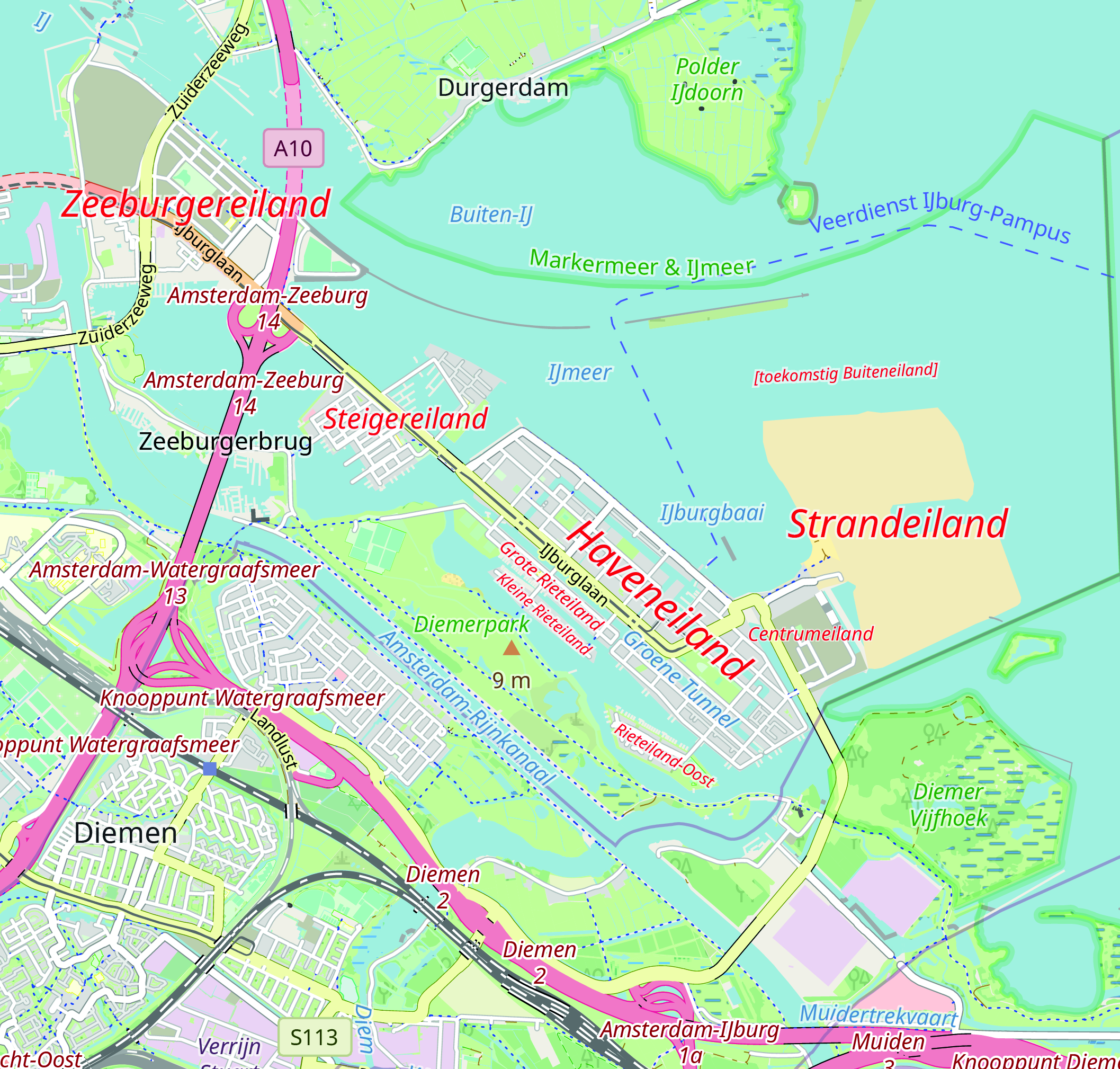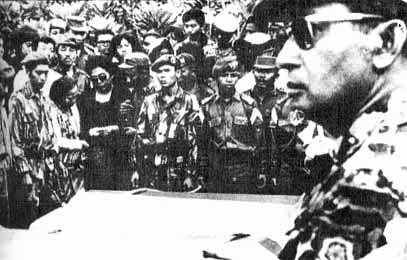|
Soekaesih
Soekaesih (EYD: Sukaesih, born ) was a Communist Party of Indonesia activist known for being one of only a handful of female political prisoners exiled by the Netherlands government to Boven-Digoel concentration camp (from 1928 to 1931). After being released she traveled to the Netherlands in the late 1930s and campaigned for the camp to be shut down. Biography Soekaesih was born in Garut, West Java, Dutch East Indies around 1895 to a noble Sundanese family. Her father was a subdistrict chief who died when she was six; she then lived with her grandfather, himself a retired official. She was forced to marry a man in his 40s at age 13 or 14; they were married for four years before she was able to divorce him. Her political activity began when she was shocked by sugar strikes in her district and the Dutch massacres of peasants; she was influenced by the ''Sarekat Islam'' movement, a mass anti-colonial organization of the Indonesian National Awakening. At some point she remarried to ... [...More Info...] [...Related Items...] OR: [Wikipedia] [Google] [Baidu] |
Soekaesih Portrait From De Waarheid 1978 Retrospective
Soekaesih ( EYD: Sukaesih, born ) was a Communist Party of Indonesia activist known for being one of only a handful of female political prisoners exiled by the Netherlands government to Boven-Digoel concentration camp (from 1928 to 1931). After being released she traveled to the Netherlands in the late 1930s and campaigned for the camp to be shut down. Biography Soekaesih was born in Garut, West Java, Dutch East Indies around 1895 to a noble Sundanese family. Her father was a subdistrict chief who died when she was six; she then lived with her grandfather, himself a retired official. She was forced to marry a man in his 40s at age 13 or 14; they were married for four years before she was able to divorce him. Her political activity began when she was shocked by sugar strikes in her district and the Dutch massacres of peasants; she was influenced by the '' Sarekat Islam'' movement, a mass anti-colonial organization of the Indonesian National Awakening. At some point she remarried to ... [...More Info...] [...Related Items...] OR: [Wikipedia] [Google] [Baidu] |
Soetitah
Soetitah (born circa 1890, date of death unknown) was a Sarekat Islam and Communist Party of Indonesia (PKI) propagandist, activist, and schoolteacher in Semarang, Dutch East Indies in the 1910s and 1920s. She was a close ally of Semaun, Tan Malaka, and other Semarang communists of the time and was chair of the women's section of the party in the early 1920s. She was exiled by the Dutch to the Boven-Digoel concentration camp from 1927 to 1930. Biography Soetitah was born in Semarang, Central Java, Dutch East Indies in around 1890. Little is known about her early life or family background. She became involved in the Sarekat Islam and radical politics during World War I; she later described herself as having come from very poor and desperate circumstances and having been inspired by the left-wing Sarekat Islam leader Semaun. By 1919 she was leading mass gatherings of thousands of Semarang SI members and helping organize a new division of that organization specifically for women. Th ... [...More Info...] [...Related Items...] OR: [Wikipedia] [Google] [Baidu] |
Boven-Digoel Concentration Camp
Boven-Digoel was a Dutch concentration camp for political prisoners operated in the Dutch East Indies from 1927 to 1947. It was located in a remote area on the banks of the river Digul, in what is now Boven Digoel Regency in South Papua, Indonesia. The site was chosen in 1928 for the internal exile of Indonesians implicated in the 1926 and 1927 communist uprisings in Java and Sumatra.Robert Cribb, ‘Convict Exile and Penal Settlement in Colonial Indonesia’, Journal of Colonialism and Colonial History 18, no 3 (2017), online: DOI: https://doi.org/10.1353/cch.2017.0043 Indonesian nationalists not associated with the Indonesian Communist Party were subsequently also sent there. History The camp was located in an isolated part of New Guinea, and surrounded by hundreds of miles of impenetrable jungle and hostile Papua tribes, so that contact with the outside world, and escape, was next to impossible. It was notorious for its endemic malaria.Adrian Vickers, p.80. The Boven-Digoel ... [...More Info...] [...Related Items...] OR: [Wikipedia] [Google] [Baidu] |
Louis Johan Alexander Schoonheyt
Louis Johan Alexander Schoonheyt (1903-1986), commonly known as L. J. A. Schoonheyt, was a Dutch medical doctor, writer, and supporter of the National Socialist Movement in the Netherlands before World War II. From 1935 to 1936 he was the camp doctor at the Boven-Digoel concentration camp in New Guinea, Dutch East Indies, and is mostly known today for the book he wrote about his experiences there, (1936). His praise for the conditions in the camp earned him the ire of the internees, Indonesian nationalists, and Dutch human rights advocates; E. du Perron called him a 'colonial bandit', while many internees burned his book after reading it in the camp. During World War II he was imprisoned by the Dutch in Jodensavanne internment camp in Surinam because of his perceived sympathies for Nazi Germany. After the war ended he petitioned the government to be rehabilitated, which was granted in 1949. Biography Early life Schoonheyt was born in Magetan Regency, Central Java, Dutch East ... [...More Info...] [...Related Items...] OR: [Wikipedia] [Google] [Baidu] |
Moenasiah
Moenasiah (born c. 1897) was a Sarekat Islam and Indonesian Communist Party leader active in Semarang, Central Java, Dutch East Indies during the 1920s. She was chairperson of the women's section of the Communist Party for a time in the 1920s. She was exiled by Dutch authorities to Boven-Digoel concentration camp from 1927 to 1930. Biography Little is known about Moenasiah's early life. She made her livelihood in Semarang by operating a Warung (roadside food stall). In the early 1920s she quickly rose to prominence in the Semarang wing of the Sarekat Islam (SI), an Indonesian nationalist organization whose Semarang branch had a strong Left-wing and Communist base. She used her status as a small-time food stall operator to draw attention to the plight of Indonesians working in the market, who were subject to unfair treatment and abuse by police and Europeans. She became vice-president of women’s section of Semarang SI in October 1921 and president in 1922. She was arrested in Ma ... [...More Info...] [...Related Items...] OR: [Wikipedia] [Google] [Baidu] |
IJburg
IJburg () is a residential neighbourhood under construction in Amsterdam, Netherlands. It is situated in the IJmeer and is being built on artificial islands which have been raised from the lake. The Haveneiland, Rieteilanden, Steigereiland and Centrumeiland are already inhabited as of 2004. It is part of the municipality Amsterdam-Oost and also contains the Diemerpark, one of the city's largest parks. History Planning (1965–1997) In 1965, the architects Jo van den Broek and Jacob B. Bakema designed the Pampus Plan for a town in the IJmeer intended to house 350,000 residents, most of whom were to come from crowded Amsterdam. But national plans changed and people were instead encouraged to move from the city to the expanding towns in the neighbouring areas like Purmerend, Hoorn and the new city of Almere. The Bijlmermeer neighbourhood was also constructed south of the city and Diemen was expanded. Policy changes in the 1980s resulted in the development of construction nearer to t ... [...More Info...] [...Related Items...] OR: [Wikipedia] [Google] [Baidu] |
Transition To The New Order
Indonesia's transition to the New Order in the mid-1960s ousted the country's first president, Sukarno, after 22 years in the position. One of the most tumultuous periods in the country's modern history, it was the commencement of Suharto's 31-year presidency. Described as the great '' dhalang'' ("puppet master"), Sukarno drew power from balancing the opposing and increasingly antagonistic forces of the army and Indonesian Communist Party (PKI). By 1965, the PKI extensively penetrated all levels of government and gained influence at the expense of the army. On 30 September 1965, six of the military's most senior officers were killed in action (generally labelled an "attempted coup") by the so-called 30 September Movement, a group from within the armed forces. Within a few hours, Major General Suharto mobilised forces under his command and took control of Jakarta. Anti-communists, initially following the army's lead, went on a violent purge of communists throughout the cou ... [...More Info...] [...Related Items...] OR: [Wikipedia] [Google] [Baidu] |
Buru
Buru (formerly spelled Boeroe, Boro, or Bouru) is the third largest island within the Maluku Islands of Indonesia. It lies between the Banda Sea to the south and Seram Sea to the north, west of Ambon and Seram islands. The island belongs to Maluku province and includes the Buru and South Buru regencies. Their administrative centers, Namlea and Namrole, respectively, have ports and are the largest towns of the island, served by Namlea Airport and Namrole Airport. About a third of the population is indigenous, mostly Buru, but also Lisela, Ambelau and Kayeli people. The rest of population are immigrants from Java and nearby Maluku Islands. Religious affiliation is evenly split between Christianity and Sunni Islam, with some remnants of traditional beliefs. While local languages and dialects are spoken within individual communities, the national Indonesian language is used among the communities and by the administration. Most of the island is covered with forests rich ... [...More Info...] [...Related Items...] OR: [Wikipedia] [Google] [Baidu] |
Saleh Iskandar Poeradisastra
Saleh Iskandar or Boejang Saleh (25 December 1923 - 1989) in Jakarta. He is an active writer who writes essays about Indonesian culture, Indonesian literature, and history History (derived ) is the systematic study and the documentation of the human activity. The time period of event before the History of writing#Inventions of writing, invention of writing systems is considered prehistory. "History" is an umbr .... He also wrote poetry, and short stories. References Indonesian writers 1923 births 1989 deaths {{Indonesia-writer-stub ... [...More Info...] [...Related Items...] OR: [Wikipedia] [Google] [Baidu] |
World War II
World War II or the Second World War, often abbreviated as WWII or WW2, was a world war that lasted from 1939 to 1945. It involved the World War II by country, vast majority of the world's countries—including all of the great powers—forming two opposing military alliances: the Allies of World War II, Allies and the Axis powers. World War II was a total war that directly involved more than 100 million Military personnel, personnel from more than 30 countries. The major participants in the war threw their entire economic, industrial, and scientific capabilities behind the war effort, blurring the distinction between civilian and military resources. Air warfare of World War II, Aircraft played a major role in the conflict, enabling the strategic bombing of population centres and deploying the Atomic bombings of Hiroshima and Nagasaki, only two nuclear weapons ever used in war. World War II was by far the List of wars by death toll, deadliest conflict in hu ... [...More Info...] [...Related Items...] OR: [Wikipedia] [Google] [Baidu] |






